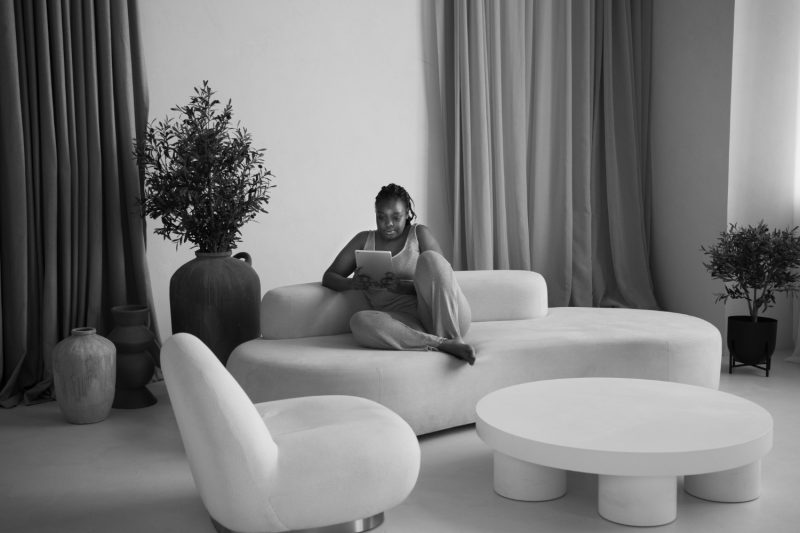Have you ever thought about living in an empty, undecorated house — only basic furniture, no accents, and all the walls painted only in monotone colors? This might be a very boring and disturbing sight, especially since your home is where you take refuge every day.
To create a more vibrant and homely atmosphere, giving your house a makeover is essential. It doesn’t have to be a large-scale renovation; it can simply be adding accents to the furniture, choosing colors, giving a touch of nature, or providing a hint of aroma.
This article will dive into the importance of decoration in your space and how to improve the aesthetics and functional interior design of your home through decoration.
Understanding aesthetics and functionality
Before learning the fundamental elements and impact of decorating a home, you must understand that decoration is not solely focused on aesthetics. Home decoration should also enhance the functionality of your home. Both of them should be balanced.
Aesthetics in home decoration
One of the most obvious purposes of adding decorative elements to your home is to enhance its aesthetic. Aesthetic is the core principle of interior decoration that defines visually pleasing qualities. A form of art that combines elements to create a sense of harmony.
When you combine every element of interior design to create a sense of harmony, you must plan and organize various aspects. This includes furniture choices, fixtures, paint, finishes, lighting, and spatial arrangement. Everything should be arranged into a unity that complements each other.
Functionality in home decoration
To balance decoration at home, you also must consider the functionality and design of your interior. This means creating a harmonious combination of form vs function of home decor. Therefore, functionality in home decoration is focused on making your home more helpful for your daily tasks by combining aesthetic elements and proper organization.
Imagine sitting in a living room where the furniture is not only aesthetically pleasing but also functional. A stylish and comfortable sofa strategically placed for both visual appeal and optimal seating arrangement. Decorative elements, such as coffee tables and shelves, not only add to the aesthetics of your living room but also provide practical storage solutions where you can store some of your stuff.
This balanced approach to home decoration ensures that the living space is not only visually appealing but also enhances its function.
Benefits of balance between aesthetics and functionality
There are many benefits you could get, such as making your home more beautiful and alive and increasing home value. However, three major benefits will make your life at home better.
Psychological and emotional well-being
A home is a place where you do several daily activities. Thus, the ideal home should be able to create a good experience for you during your time there. Using decorative elements such as color, for instance, plays a crucial role in achieving this goal. Color plays a significant role in affecting the atmosphere and emotions. A lack of thoughtful color planning will jeopardize the beauty of the room and negatively affect your perception.
Read more: Improve Your WFH Performance With Interior Color
Another example is the use of lighting elements for decoration. Lighting is very important – proper combination and lighting level allow you to perform certain tasks smoothly (i.e., cooking, reading, watching, etc.). Besides that, choosing the lighting style, such as using pendant lights or chandeliers, could elevate your home’s visuals and improve your mood when entering a room.
Read more: Harnessing the Benefits of Ergonomic Home Environments
Another element when decorating your home is incorporating aromatherapy for atmosphere enhancement. Many researchers have proven aromatherapy to reduce any symptoms of psychological distress and boost productivity. For example, using calming scents like lavender in your bedroom could help you achieve better sleep quality, or using peppermint essential oils in your home office could help you be more focused on work.
Enhancing daily living
You can better perform certain tasks at home by organizing your space and its furniture, ornaments, and fixtures. Decorating must not be separated from spatial planning and measurement.
Consider how you will move within your home and where you want to place each object based on the available space. Through proper planning and organization, home decoration can help you boost your productivity at home.
Accentuate your taste and identity
From an architectural perspective, decoration and ornaments at home are part of sociocultural influences expressing how people fulfill their tastes and cultural identity. For example, people who hold Christian beliefs will decorate their homes with Christmas ornaments in December.
By incorporating your personal taste and cultural background into your home decoration, people will have a picture of you based on how your home looks. Home decoration could express your life experiences that shape your personality.
For example, if you’re an introverted person, you might prefer to use subdued colors, textures, and patterns. However, if you are an extrovert person, you might prefer to use stronger colors, textures, and patterns.
Strategies to achieve the balance between form and function
In the previous section, you’ve been learning about the balance between aesthetics and functionality and its benefits. Now, you will learn how to apply it in your home decoration:
Multifunctional furniture and design
Integrating versatile designs, your furniture becomes visually pleasing and functional as a decorative element, contributing to a more efficient and adaptable living environment.
If you live in a small space, using multifunctional furniture and design should balance functionality and aesthetics. Some examples include using a bookcase with a fold-down table, under-bed storage that doubles as a bedside table, a mirror with shelving hooks, a staircase with built-in shelving, a side table with storage and cable management, etc.
Cohesive color and style choices
As mentioned, color has a significant impact on emotions and the room’s atmosphere. The hue of the walls can create a sense of unity and harmony with the furniture style. Therefore, you can follow these simple steps to mix and match your wall color with your furniture style:
- Familiarize yourself with the color scheme: From the color scheme, you have the freedom to find the perfect color combination based on your taste.
- Starting from monochrome: Monochrome usually means sticking with one color throughout a room. However, it will be boring to see everything only in one color. Thus, you can combine stand-out colors to act as a focal point (i.e., using white throughout the living room and adding a beige or pastel yellow color around the fireplace area).
- Using a neutral base: If you are planning to use several colors within your room, consider painting your room with neutral colors as a base.
- Add some accents or ornaments: You can try to add a picture frame or ornaments to elevate your room’s accent. Picture frames and ornaments could also play a role as finishing that complements your furniture style and color choice.
Make it personal without sacrificing its function
As you learned before, the way you decorate your home has the potential to reflect the life experiences that have molded your current personality. In decorating your house to suit your taste without losing functionality and aesthetic value, try answering some of the reflective questions below:
- What color do you want to paint your house?
- What style of furniture will you choose?
- What kind of ornaments do you want to place within your home?
- Do you have any memorabilia to be displayed?
Beautify your home with natural elements
Biophilic design suggests that humans, including yourself, can strongly connect with natural elements. From an architectural perspective, you can present natural elements in interior design by decorating your area with some indoor plants and flower arrangements.
Read more: The Relationship Between Biophilic Designs and Your Well-Being
Besides enhancing the aesthetic appeal of your home, adding some indoor plants is also beneficial for your well-being. Indoor plants are proven by many researchers to elevate the indoor air quality within the home because they trap and absorb pollutants. Also, the beauty created by those plants can create a more welcoming environment within your home.
Satisfy your sense of smell
Decoration is not only about visual and functional aspects but also includes the element of smell. Of course, you don’t want to live in a beautiful home that smells bad. Using aromatherapy reduces any psychological distress symptoms. It even boosts productivity because of its interaction with the brain, which receives information from the sense of smell.
Choosing aromatherapy that suits the location can be done by following these steps:
- For the bedroom: Create a cozy and calming environment by using lavender, bergamot, frankincense, chamomile, or sweet orange essential oils.
- Living room: Create a welcoming atmosphere by using citrus-scented oils such as lemon, lime, grapefruit, or bergamot.
- Dining room: Using bergamot and sweet orange essential oils could make the room more appealing without being overwhelming.
- Study or home office room: Try to use essential oils like eucalyptus, peppermint, rosemary, or basil to boost your productivity and help you focus on work.
In conclusion
The art of home decoration extends beyond mere aesthetics — it includes the vital aspect of functionality.
Striking a delicate balance between these two elements significantly enhances your life. The benefits of achieving harmony between aesthetics and functionality include improving psychological and emotional well-being, enhancing daily living, and expressing your identity.
A home serves as more than just a physical shelter. It is a space where your experiences are cultivated, emotions are nurtured, and identity is expressed.
Therefore, carefully considering both visual appeal and practicality in home decoration becomes paramount. A harmonious living space can be created by integrating thoughtful elements such as color schemes, multifunctional furniture, personal touches, nature-inspired designs, and aromatherapy.
If you would like to see more resources on home decor, check out the Home Organization Science Labs. The lab uses the research of the Institute for Life Management Science Labs to produce courses, certifications, podcasts, videos, and other tools. Visit the Home Organization Science Labs today.
Photo by Freepik


